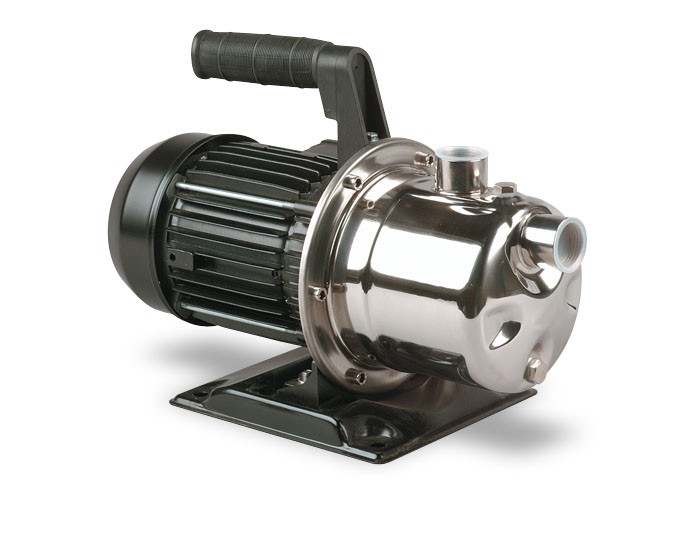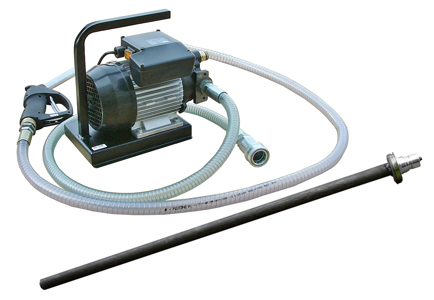Contents
A portable transfer pump is a versatile device for moving liquids efficiently. It is compact, easy to use, and highly effective.
A portable transfer pump offers a convenient solution for transferring various liquids, including water, fuel, and chemicals, between locations. Its compact design ensures portability, making it ideal for both personal and professional use. These pumps are often used in farming, construction, and emergency scenarios where quick liquid transfer is essential.
They are powered by electricity, batteries, or fuel, providing flexibility for different situations. With simple operation and robust performance, a portable transfer pump saves time and effort, enhancing productivity and ensuring efficient fluid management. Investing in a high-quality portable transfer pump can greatly benefit anyone needing reliable liquid transfer.
Introduction To Portable Transfer Pumps
Portable transfer pumps are handy tools for many tasks. They move liquids quickly and easily. These pumps are lightweight and easy to carry. They are perfect for home, farm, and industrial use.
What Is A Portable Transfer Pump?
A portable transfer pump is a small, movable pump. It transfers liquids from one place to another. These pumps can handle water, fuel, and chemicals. They are powered by electricity, gas, or batteries.
| Feature | Description |
|---|---|
| Size | Small and lightweight |
| Power Source | Electric, gas, or battery |
| Liquid Types | Water, fuel, chemicals |
Common Uses And Applications
Portable transfer pumps are used in many ways. Here are some common uses:
- Home: Drain pools, basements, and water heaters.
- Farm: Irrigate fields, transfer fuel, and water livestock.
- Industrial: Move chemicals, oils, and waste liquids.
These pumps save time and effort. They make liquid transfer easy and fast.

Credit: www.pentair.com
Key Features To Consider
Choosing the right Portable Transfer Pump can be challenging. Several key features are important for performance and durability. This guide helps you understand these features clearly.
Power Source Options
The power source is crucial. Portable transfer pumps come with different power options:
- Electric Pumps: Easy to use, just plug into an outlet.
- Battery-Operated Pumps: Great for portability, no cords needed.
- Gasoline-Powered Pumps: Ideal for remote areas without electricity.
Choose the power source that fits your needs best. Electric pumps are ideal for indoor use. Battery-operated pumps are perfect for quick tasks. Gasoline-powered pumps work well in remote locations.
Material And Durability
The material of the pump affects its durability. Key materials include:
| Material | Durability |
|---|---|
| Plastic | Lightweight, but less durable. |
| Stainless Steel | Highly durable and rust-resistant. |
| Cast Iron | Very durable, but heavier. |
Stainless steel offers the best balance of durability and weight. Cast iron is best for heavy-duty tasks. Plastic is good for lightweight, temporary use.
Flow Rate And Pressure
The flow rate and pressure determine how fast the pump moves liquids. Key points to consider:
- Flow Rate: Measured in gallons per minute (GPM).
- Pressure: Measured in pounds per square inch (PSI).
Higher flow rates are better for large volumes of liquid. Higher pressure is needed for thick or viscous liquids. Choose a pump with the right balance for your tasks.
Understanding these key features helps you make an informed choice. A good portable transfer pump should be reliable and efficient.
How To Choose The Right Pump
Choosing the right portable transfer pump can seem daunting. Understanding your specific needs and comparing different models can simplify the process. This guide will help you make an informed decision.
Assessing Your Needs
First, determine the type of liquid you need to transfer. Is it water, oil, or chemicals? Different pumps handle various liquids. Next, consider the volume of liquid. How much liquid do you need to move? Finally, think about the distance and height. How far and high will the pump need to transfer the liquid?
Comparing Different Models
Different models offer unique features. Here are some key factors:
- Flow Rate: How quickly can the pump transfer liquid?
- Power Source: Is it electric, battery-operated, or manual?
- Portability: How easy is it to move the pump?
- Durability: Is the pump built to last?
Below is a comparison table of some popular models:
| Model | Flow Rate | Power Source | Portability | Durability |
|---|---|---|---|---|
| Model A | 10 GPM | Electric | High | High |
| Model B | 8 GPM | Battery | Medium | Medium |
| Model C | 6 GPM | Manual | Low | High |
Budget Considerations
Your budget plays a crucial role in selecting a pump. Here are some tips:
- Set a budget range.
- Compare prices of different models within your range.
- Look for discounts or deals.
- Consider the long-term costs like maintenance and parts.
Choosing a pump within your budget ensures you get the best value for your money.

Credit: www.hillpumps.com
Installation And Maintenance
Proper installation and maintenance of a Portable Transfer Pump ensure its longevity and efficiency. This guide will help you with the installation and upkeep of your pump. Follow these steps to keep your pump running smoothly.
Step-by-step Installation Guide
- Choose a Stable Surface: Place the pump on a flat, dry surface.
- Connect the Hoses: Attach the intake hose to the pump’s inlet. Secure it tightly.
- Secure the Output Hose: Fix the output hose to the pump’s outlet. Ensure there are no leaks.
- Power Up: Plug the pump into a suitable power source. Check the voltage requirements.
- Test the Pump: Turn on the pump and check for proper water flow.
Routine Maintenance Tips
- Regular Cleaning: Clean the hoses and pump regularly to avoid blockages.
- Check for Leaks: Inspect all connections for any leaks. Tighten if necessary.
- Lubricate Moving Parts: Apply lubricant to moving parts as recommended.
- Inspect Filters: Ensure filters are clean and free of debris.
- Store Properly: Store the pump in a dry place when not in use.
Troubleshooting Common Issues
| Issue | Possible Cause | Solution |
|---|---|---|
| Pump Not Starting | Power Supply Issue | Check the power source and connections. |
| Low Water Flow | Blocked Hoses | Clean and clear the hoses. |
| Leaking Water | Loose Connections | Tighten all connections securely. |
| Strange Noises | Debris in Pump | Inspect and clean the pump. |
Safety Tips And Best Practices
Using a portable transfer pump can make your tasks easier. But safety is key. Follow these tips to stay safe and protect your equipment.
Handling Hazardous Liquids
Always wear protective gear like gloves and goggles. Handle hazardous liquids with care. Use a well-ventilated space to avoid fumes. Keep a first aid kit nearby for emergencies.
- Wear gloves and goggles
- Work in a ventilated area
- Keep a first aid kit handy
Preventing Overheating
Check the pump regularly to ensure it does not overheat. Let the pump rest if it gets too hot. Use the pump only for the recommended duration.
| Action | Frequency |
|---|---|
| Check temperature | Every 30 minutes |
| Let pump rest | After 1 hour of use |
Proper Storage
Store the portable transfer pump in a dry, cool place. Clean the pump after each use. Keep it away from children.
- Clean the pump
- Store in a cool, dry place
- Keep out of reach of children

Credit: www.agrisales-inc.com
Frequently Asked Questions
What Is The Difference Between A Utility Pump And A Transfer Pump?
A utility pump is used for general water removal, like draining basements. A transfer pump moves water between locations.
How Long Can You Run A Water Transfer Pump?
A water transfer pump can run continuously for several hours. Check the manufacturer’s guidelines for specific runtime limits. Regular maintenance ensures optimal performance.
What’s The Difference Between A Booster Pump And A Transfer Pump?
A booster pump increases water pressure in a system. A transfer pump moves water from one location to another.
Is There Such Thing As A Portable Sump Pump?
Yes, portable sump pumps exist. They are compact, easy to transport, and ideal for temporary water removal. These pumps suit various needs, including basements and outdoor spaces. Portable sump pumps are convenient and efficient for homeowners and professionals alike.
Conclusion
A portable transfer pump is an essential tool for various tasks. It offers convenience and efficiency in fluid transfer. Investing in a reliable pump saves time and effort. Make sure to choose one that meets your specific needs. Enhance your productivity and tackle projects with ease using a portable transfer pump.
